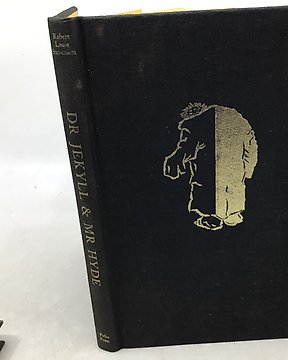
Robert Louis Stevenson / Mervyn Peake (ill) - Dr. Jekyll and Mr. Hyde - 1974
N. 82008145

N. 82008145

1. "The Pilgrim's Progress" by John Bunyan and ill. with 39 illustrations by Robert Anning Bell - Methuen, London - 1898 first thus UK edition - 18cmx15cm - condition: good, some rubbing, all Anning Bell illustrations present
2. "The Pilgrim's Progress" by John Bunyan and ill. by Harold Copping - Religious Tract Society, ca 1925 - 18cmx15cm - condition: original binding with some wear to linings, some loose plates, complete
3. "The Pilgrim's Progress" by John Bunyan - Collins, London - ca 1910 edition - 18cmx15cm - condition: original decorated boards, frontispiece and some plate loose but present, name to ffep'
The Pilgrim's Progress from This World, to That Which Is to Come is a 1678 Christian allegory written by John Bunyan. It is regarded as one of the most significant works of theological fiction in English literature and a progenitor of the narrative aspect of Christian media.[1][2][3][4][5][6] It has been translated into more than 200 languages and has never been out of print.[7][8] It appeared in Dutch in 1681, in German in 1703 and in Swedish in 1727. The first North American edition was issued in 1681.[9] It has also been cited as the first novel written in English.[10] According to literary editor Robert McCrum, "there's no book in English, apart from the Bible, to equal Bunyan's masterpiece for the range of its readership, or its influence on writers as diverse as William Hogarth, C. S. Lewis, Nathaniel Hawthorne, Herman Melville, Charles Dickens, Louisa May Alcott, George Bernard Shaw, William Thackeray, Charlotte Bronte, Mark Twain, John Steinbeck and Enid Blyton."[11][12] The words on which the hymn "To be a Pilgrim" is based, come from the novel.
Bunyan began his work while in the Bedfordshire county prison for violations of the Conventicle Act 1664, which prohibited the holding of religious services outside the auspices of the established Church of England. Early Bunyan scholars such as John Brown believed The Pilgrim's Progress was begun in Bunyan's second, shorter imprisonment for six months in 1675,[13] but more recent scholars such as Roger Sharrock believe that it was begun during Bunyan's initial, more lengthy imprisonment from 1660 to 1672 right after he had written his spiritual autobiography Grace Abounding to the Chief of Sinners.[14]
The English text comprises 108,260 words and is divided into two parts, each reading as a continuous narrative with no chapter divisions. The first part was completed in 1677 and entered into the Stationers' Register on 22 December 1677. It was licensed and entered in the "Term Catalogue" on 18 February 1678, which is looked upon as the date of first publication.[15] After the first edition of the first part in 1678, an expanded edition, with additions written after Bunyan was freed, appeared in 1679. The Second Part appeared in 1684. There were eleven editions of the first part in John Bunyan's lifetime, published in successive years from 1678 to 1685 and in 1688, and there were two editions of the second part, published in 1684 and 1686.
Come fare acquisti su Catawiki
1. Scopri oggetti speciali
2. Fai l’offerta più alta
3. Paga in tutta sicurezza